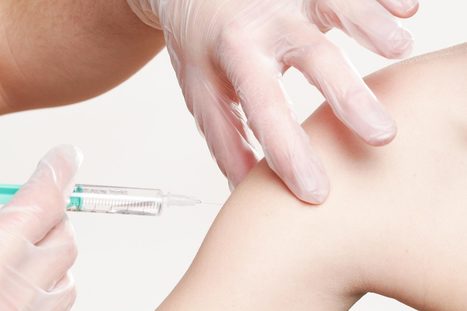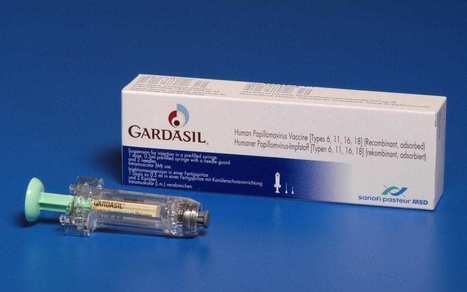Human Papilloma Virus or HPV has been known to be transmitted between humans via sexual contact and HPV has been known to be a sexually transmitted disease or STD. The Centers for Disease Control and Prevention (CDC) states that HPV is one of the commonest STDs among humans. It affects around 79 million individuals in the United States. In most cases the infection may pass unnoticed and may resolve on its own. However HPV has been associated with the later development of cervival cancers in women and oral and throat cancers among men and women.
A new study however reveals that rabbit and mice papilloma viruses are capable of spreading via contaminated blood from one to another. The study from Pennsylvania State researchers titled, “Papillomavirus can be transmitted through the blood and produce infections in blood recipients: Evidence from two animal models” was published in the recent issue of the journal Emerging Microbes & Infections. The researchers warned that this study could be a basis for the hypothesis that HPV could also be transmitted between humans via blood.
Study leader Jiafen Hu, assistant professor of pathology and laboratory medicine at Penn State College of Medicine called for more research to confirm that papilloma viruses are capable of transmission via blood especially blood transfusions. He said that the blood prepared for receive blood transfusions may require a screening for HPV if this is proven to be true. Hu said, “People who are receiving blood transfusions typically have immune systems that aren't working optimally, so their systems are more vulnerable. We might want to think about adding HPV to the list of viruses for which blood donations are screened, as well as researching whether the typical viral load of HPV in human blood would be sufficient to cause infection.”
Hu explained that the team came across a case in 2005 where a similar transmission was seen. He said, “Some years ago, researchers were looking at blood samples from a group of HIV-positive children, and as they were testing those samples, they found that some of them were also positive for HPV. Because these children were so young, it prompted the question of whether the virus could have come from blood transfusions, which some of the children had undergone.”
Since it is difficult to check for HPV on animal models, the team decided to perform their experiments on other forms of papilloma viruses. “HPV is strictly species-specific,” they wrote, “and thus, cannot be studied directly in animals. Our laboratory has two preclinical animal models with their own naturally occurring papillomaviruses.”
The team used Cottontail Rabbit Papillomavirus which is commonly used for researching HPV infections in humans because of its similarity with HPV. For their experiments the team first injected the rabbit papilloma virus into the bloodstreams of the lab rabbits. The rabbits were then monitored for four weeks when they were found to develop tumours. This proved that the virus had travelled via the blood stream to cause the tumours in the rabbits said Hu. The team found that several genetic expressions were lower in these rabbit tumours similar to actual sexually transmitted tumours. They wrote, “The rabbit skin tumours induced via blood infection displayed decreased expression of SLN, TAC1, MYH8, PGAM2, and APOBEC2 and increased expression of SDRC7, KRT16, S100A9, IL36G, and FABP9, as seen in tumours induced by local infections.”
Hu explained that in this experiment they had used a large amount of the virus to be injected into the rabbits. This infection due to the injection of the viruses could be due to the heavy viral load, he added. In a normal case of blood borne infection, the dose of the virus could be significantly lower. Thereafter the team reduced the viral load injected by five times. This time the tumours were still seen in 18 out of the 32 animals. Hu said, “We were able to show that the virus in the blood caused tumors, but what about blood transfusions? People receiving a transfusion may only get a very small amount of the virus. To simulate this, we injected the virus into one animal, took 10 millilitres of blood and transfused it into a second animal. We still saw tumors.”
The next question the researchers addressed was if the blood borne infection could cause tumours and cancerous changes in the cervix as the sexually transmitted infection was capable of. Now they repeated their experiment using mice model. When injected with the papilloma virus into lab mice, the team found that the virus and viral warts and tumours were found in the tongue and genital mucosa of the mice. They also found the virus in the stomach mucosa of the mice. This proved that the virus was capable of travelling from the blood stream into oral and genital mucosa as well as into the gastric mucosal surfaces.
Findings published in the Journal of Emerging Microbes and Infections:
https://doi.org/10.1080/22221751.2019.1637072



 Your new post is loading...
Your new post is loading...













Amazing
https://buypsychedelicdrugs.com/product-category/dmt/
https://buypsychedelicdrugs.com/product/5-meo-dmt/
https://buypsychedelicdrugs.com/product/4-aco-dmt/
https://buypsychedelicdrugs.com/product/ayahuasca/
https://buypsychedelicdrugs.com/product/changa-dmt/
https://buypsychedelicdrugs.com/product/buy-dmt-vape-pen/
https://buypsychedelicdrugs.com/product/lsd-tabs/
https://buypsychedelicdrugs.com/product/buy-mimosa-hostilis-root-bark-powdered-mhrb/
https://buypsychedelicdrugs.com/product/nn-dmt/
https://buypsychedelicdrugs.com/product/amanita-muscaria/
https://buypsychedelicdrugs.com/product/buy-dragons-dynamite-truffles/
https://buypsychedelicdrugs.com/product/golden-teachers/
https://buypsychedelicdrugs.com/product/buy-high-hawaiians-truffles/
https://buypsychedelicdrugs.com/product/liberty-caps/
https://buypsychedelicdrugs.com/product/buy-microdosing-psilocybin-truffles-10-pack/
https://buypsychedelicdrugs.com/product/buy-microdosing-psilocybin-truffles-2-pack-in-stock/
https://buypsychedelicdrugs.com/product/buy-microdosing-psilocybin-truffles-20-pack/
https://buypsychedelicdrugs.com/product/golden-teachers/
https://buypsychedelicdrugs.com/product/buy-penis-envy-mushroom/
https://buypsychedelicdrugs.com/product/codeine-promethazine/
https://buypsychedelicdrugs.com/product/ecstasy-mdma/
https://buypsychedelicdrugs.com/product/microdosing-psilocybin-truffles-1-pack-for-sale/
https://buypsychedelicdrugs.com/product/mush-rocks-truffles-for-sale/
https://buypsychedelicdrugs.com/product/pcp-powder/
https://buypsychedelicdrugs.com/product/cocaine/
https://buypsychedelicdrugs.com/product/methamphetamine/
https://buypsychedelicdrugs.com/product/xanax/
https://buypsychedelicdrugs.com/product/lsd-gel-tabs/
https://buypsychedelicdrugs.com/product/lsd-liquid/
https://caluaniemuelearoxidizeusa.com/product/buy-10l-caluanie-muelear-pasteurize/
https://caluaniemuelearoxidizeusa.com/product/buy-20l-caluanie-muelear-oxidize/
https://caluaniemuelearoxidizeusa.com/product/buy-5l-caluanie-muelear-pasteurize/
https://caluaniemuelearoxidizeusa.com/product/buy-caluanie-muelear-pasteurize/